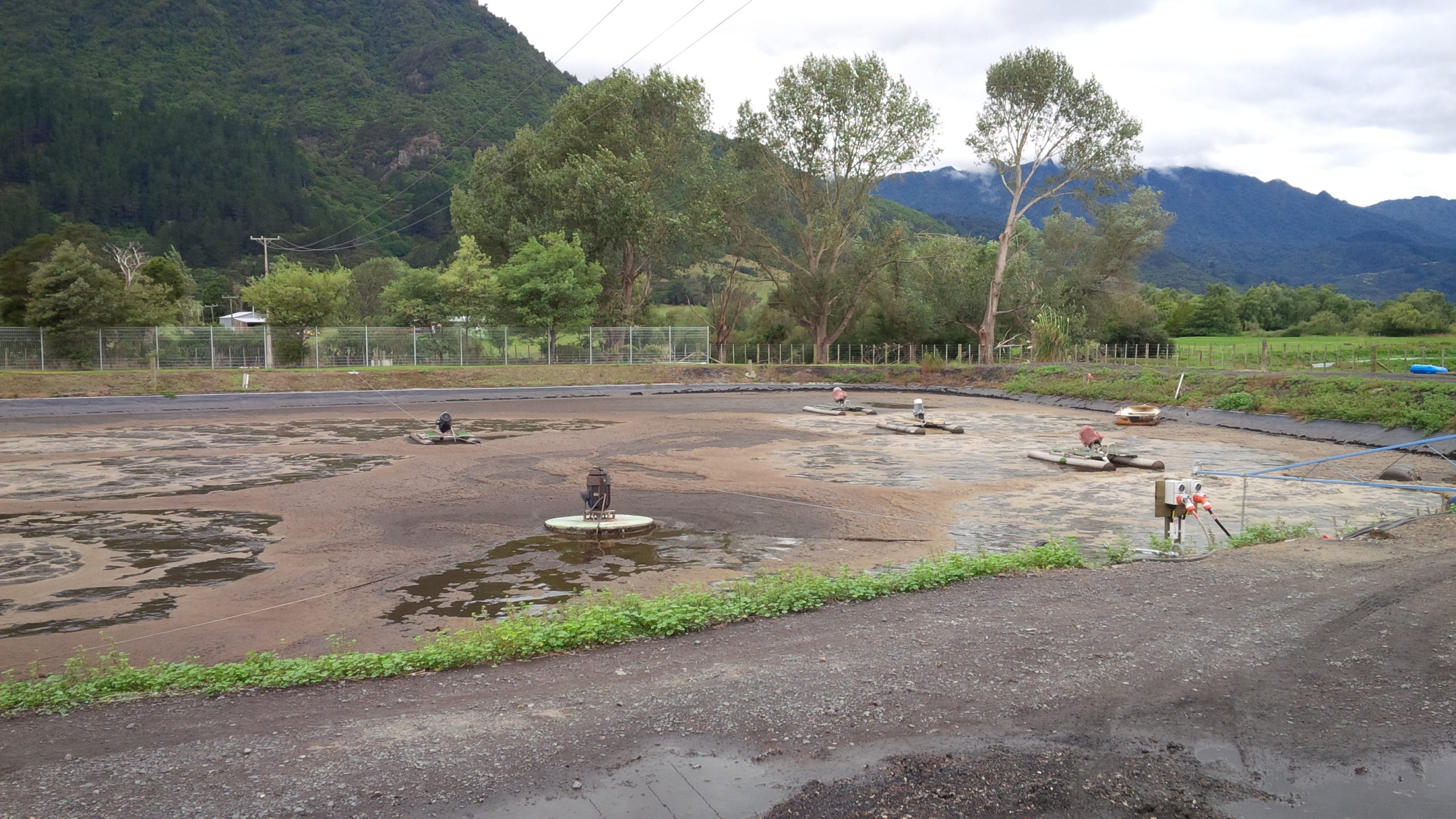
A meat processing wastewater lagoon can have a bad reputation because of the potential for sludge build-up and odour. However, a properly functioning meat processing wastewater lagoon, one with sufficient aeration and mixing, can be an efficient, environmentally friendly, and relatively inexpensive method of treatment.
One major benefit of a meat processing wastewater lagoon of adequate capacity is its ability to cope with seasonality and surges in influent levels due to increases in production. In addition, aerobic digestion turns wastewater into a liquid compost which can be applied to crop fields to add nutrients to the soil.
High-protein meat processing wastewater generally has a high Biological Oxygen Demand (BOD), high Total Suspended Solids (TSS), and high fats, oils and greases (FOG) content. It may be further contaminated with chemicals from hide processing and wash down water. Substantial organic loads like these require high dissolved oxygen levels (lagoon DO) to enable the beneficial bacteria to break down the BOD. The high TSS needs robust mixing to keep the solids in suspension to allow for biological digestion.
Without enough aeration and mixing, BOD and TSS levels may exceed consent limits, sludge and odours may develop, and a meat processing wastewater lagoon may fall out of compliance.
Oxygen Transfer & Mixing in Meat Processing Lagoons
Fine bubble aeration systems are one popular meat processing lagoon aeration alternative, primarily due to the technology’s ability to efficiently add oxygen to water, which is crucial in order for the natural bacteria to effectively break down the BOD and TSS. Independent testing has shown fine bubble aerators can achieve oxygen transfer efficiencies of up to 6–7 lb/O2/hp-h. This generally makes fine bubble an attractive choice over Surface Aeration, as it is less efficient at transferring oxygen to water, capable of only 1.75–2.25 lb/O2/hp-h.
Due to the high solids content in meat processing wastewater lagoons, mixing is also a crucial factor. Surface aerators have a hard time mixing water below 1.8m underneath where they are located, making them less effective in deeper lagoons. While fine bubble diffusers are located near the bottom and therefore capable of mixing the entire water column, the small nature of the bubbles does not create the vigorous mixing needed to keep the protein solids in suspension. Insufficiently mixed lagoons can experience excessive sludge build-up that can lead to lagoon odours and higher BOD and TSS effluents and lagoon turnover. For more information, see our post on Causes and Effects of Wastewater Lagoon Sludge Explained.
Fine Bubble Aeration Plus Turbulent Mixing
In a high-protein environment like a meat processing wastewater lagoon, sufficient turbulent mixing is critical to keep solids in suspension. The portable, modular Ares Aeration® unit combines both fine bubble aeration for oxygen transfer with coarse bubble technology for turbulent mixing through the water column. Together, these components allow Ares to oxygenate and treat water effectively while still using energy efficiently. The Ares system also features a portable design—each unit has its own weighted legs and is fed air via flexible weighted tubing. Because it’s portable, it can be used to manage practically any meat processing wastewater treatment cell by simply lowering it in from the surface—no need to dewater the lagoon. Retrofitting an existing lagoon with a Ares Lagoon Aeration System to add aeration and mixing will maximize the existing lagoon capacity, providing more treatment in the same space. And, it is less expensive than fines for noncompliance, costly maintenance or remediation, higher energy costs, or losses from disruptions in production.
